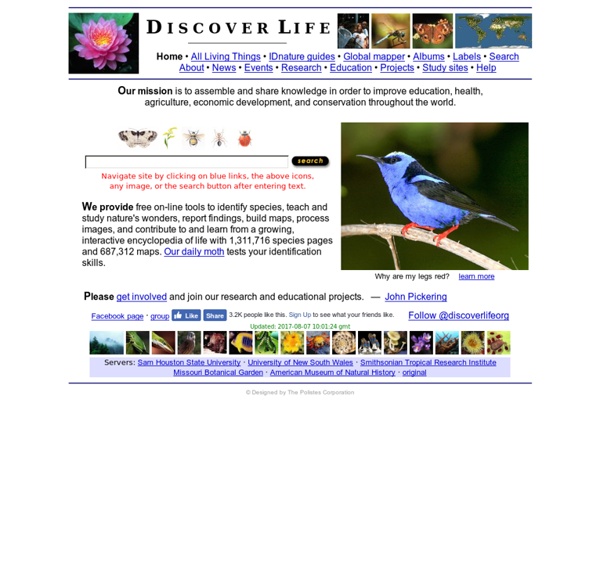



Global Genome Biodiversity Network A Collaborative Effort to Cryo-preserve and Provide Access to Genomic Samples from Across the Tree of Life The Global Genome Biodiversity Network (GGBN) is a global network of well-managed collections of genomic tissue samples from across the Tree of Life, benefiting society through biodiversity research, development and conservation. This network will foster collaborations among repositories of molecular biodiversity in order to ensure quality standards, improve best practices, secure interoperability, and harmonize exchange of material in accordance with national and international legislation and conventions. Goals Provide genome-quality samples from across the Tree of Life for research, training, and development, thereby contributing to the conservation of global genetic diversity for generations to come.
Critter Catalog Here is information about many common animals found in Michigan, and a few that live in other places. You could find many of these animals in or around your schoolyard. Remember that this is just a little bit of animal biodiversity. There are many many other kinds of animals in other places. If you want to learn about animals that don't live in southeast Michigan, you can go to the Animal Diversity Web. Mammals, birds, reptiles, amphibians, and fish are all vertebrates - they have a "spinal column" made up of many bones. While vertebrates are more familiar to most people, there are many, many more species of invertebrates. For simplicity's sake, we have presented six main groups of invertebrates, distinguished by the number of legs they have.
Morphobank.org - Homologies BUILDING BIG: Home Page Explore large structures and what it takes to build them with BUILDING BIG™, a five-part PBS television series and Web site from WGBH Boston. Here are the main features of the site: Bridges, Domes, Skyscrapers, Dams, and Tunnels. The Labs Try your hand at our interactive engineering labs. The Challenges Take on the challenges of building big. Wonders of the World Databank Explore our databank of big structures. Local Wonders Investigate big structures near you. Who Builds Big? About the Series Learn more about the shows, and see a chat with David Macaulay. Educators' Guide How to use the Web site, with hands-on activities. Shop Building Big DVDs and books from David Macaulay available at ShopPBS.org. Site Tour Learn more about the features in this site. Site Map The whole site at a glance. Web Credits Feedback Help
Species 2000 Plants & History Ever since Early Man rubbed two sticks together to make fire, plants have played a vital role in the history of mankind. The cultivation of grain changed nomads into village dwellers, wooden boats allowed civilisations to explore new lands, and precious spices were used from earliest times to trade between nations. Later on, it was Christopher Columbus’s search for new spice routes that led to his discovery of the Americas and their colonisation by Europeans. Plants have been used as medicines, but also as instruments of death. The famous Greek philosopher Socrates drank hemlock when sentenced to death in ancient Athens. A plant allegedly even influenced the laws of physics! Plants have had far-reaching effects on many civilisations, the impact of which we still feel today. See the top 10 plants that we think have made the biggest difference to this category.
ITIS: Integrated Taxonomic Information System Home | Earth: The Operators' Manual IPNI - International Plant Names Index Plant List